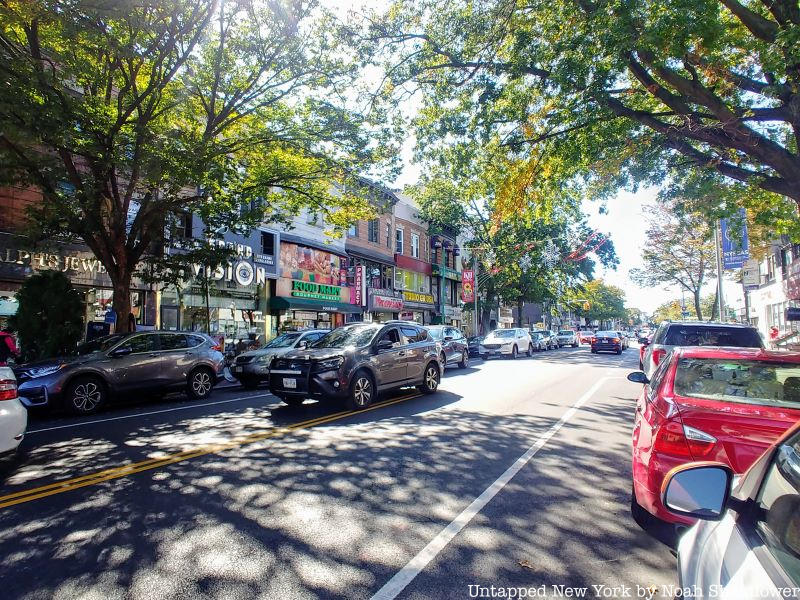
Midwood is a neighborhood in southern Brooklyn to the south of Flatbush and east of Bensonhurst. As one of the centers of Jewish culture in New York City, Midwood features dozens of kosher eateries, Judaica stores, and Jewish clothing stores on streets like Coney Island Avenue, Avenues J and M, and Kings Highway. Midwood was known for its film and television scene, beginning with Vitagraph and growing with the opening of several movie theaters like The Avalon (now a Walgreens), The Kent Triplex Movie Theater, and The Jewel. The area also attracted hundreds of Orthodox Jews moving from nearby Borough Park and abroad, many of whom opened synagogues and yeshivas. Though many of Midwood’s historic institutions have since closed, the area is still bustling, especially along Kings Highway. Here are the top 10 Secrets of Midwood!
1. Midwood used to be a leader in the city’s film industry

Midwood’s film and television industry was at one point among the most robust in the city. The Vitagraph company was the most prolific American film company at that time. It opened in 1897 by J. Stuart Blackton and Albert E. Smith at 1277 East 14th Street. Originally, the studio operated on the rooftop of a building on Manhattan’s Nassau Street before moving to Midwood. Early newsreels by Vitagraph included scenes from the Spanish-American War, and the company was also the first to use the stop-motion technique in its film The Humpty Dumpty Circus. The company also had a partnership with Thomas Edison, agreeing to sell their most popular films to Edison for distribution, thus avoiding patent lawsuits. In 1909, Vitagraph distributed the first film adaptation of Les Miserables and also participated in the Paris Film Congress in an attempt to expand distribution to Europe. During the 1910s, Vitagraph released pre-Chaplin film comedies, perhaps the first feature film, the first aviation film, and World War I propaganda films including The Battle Cry of Peace. Many films stars lived in Midwood, included “Vitagraph Girl” Florence Turner, vaudeville actor Maurice Costello, Norma Talmadge, comedian Larry Semon (who directed the silent film The Wizard of Oz), and “Vitagraph Dog” Jean.
In 1925, Warner Bros. purchased Vitagraph, and studio operations were moved to Hollywood in 1939. The Brooklyn Historical Society and Museum of the Moving Image both have substantial Vitagraph collections. Part of Vitagraph’s Midwood studios was purchased by NBC Television in 1952, and this became NBC Brooklyn. At the time, it was one of the world’s largest color TV production studios, and the first show it produced in 1954 starred Betty Hutton. Underneath Studio 1 was a swimming pool built specifically for a show starring famous swimmer Esther Williams. Shows and programs that originated at Studios 1 and 2 included Peter Pan, Kraft Music Hall, Hullabaloo, The Sammy Davis Jr. Show, The Cosby Show, and a few episodes of Saturday Night Live. NBC eventually closed the studios, after which JC Studios took over. Yeshiva University purchased part of the land for Brooklyn Torah Academy, which then became the Shulamith School. OHEL Children’s Home and Family Services purchased the former Studio 1 building, while an eight-story apartment building called The Vitagraph opened in 2018. Figures like Woody Allen and Darren Aronofsky both grew up in Midwood as well.





